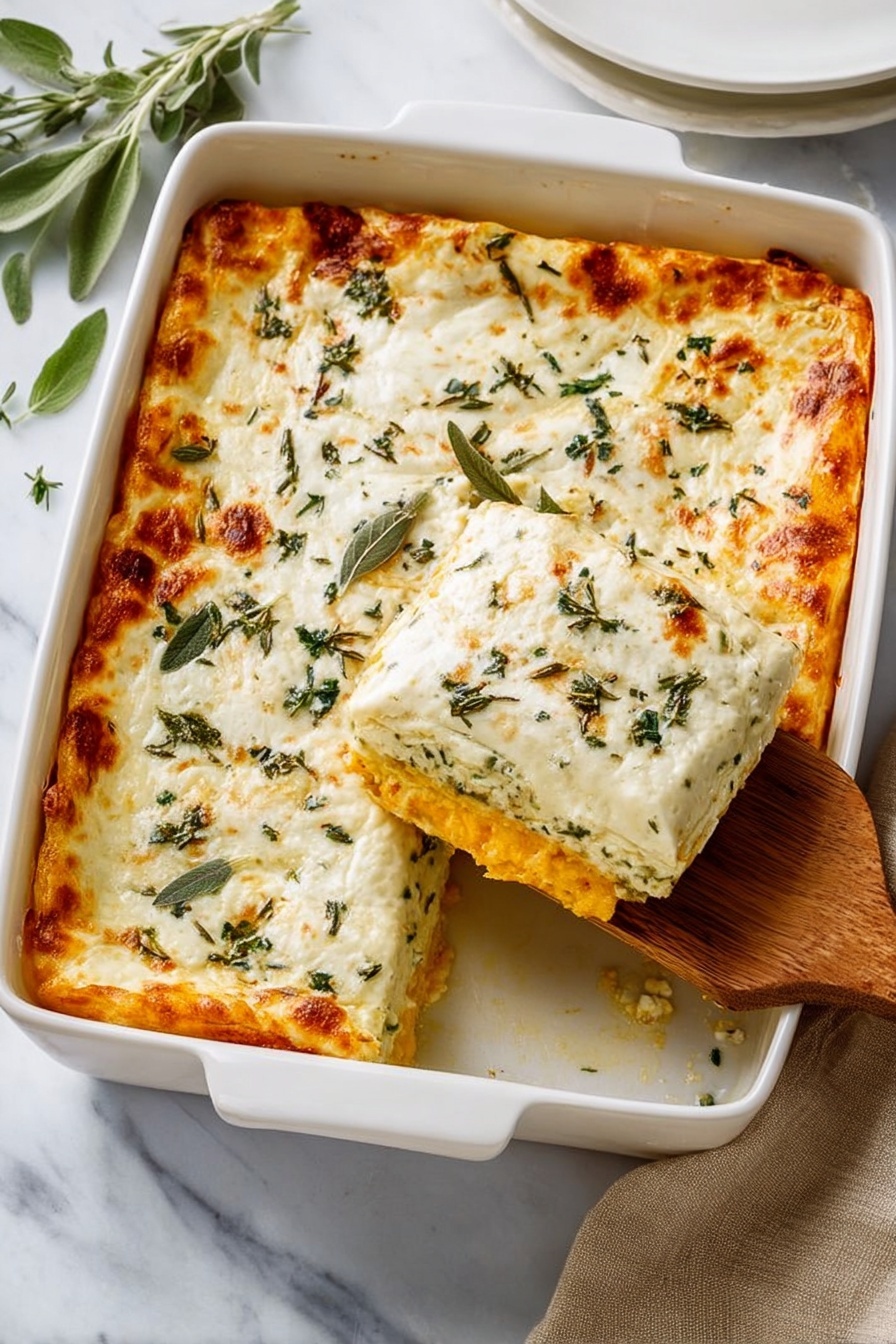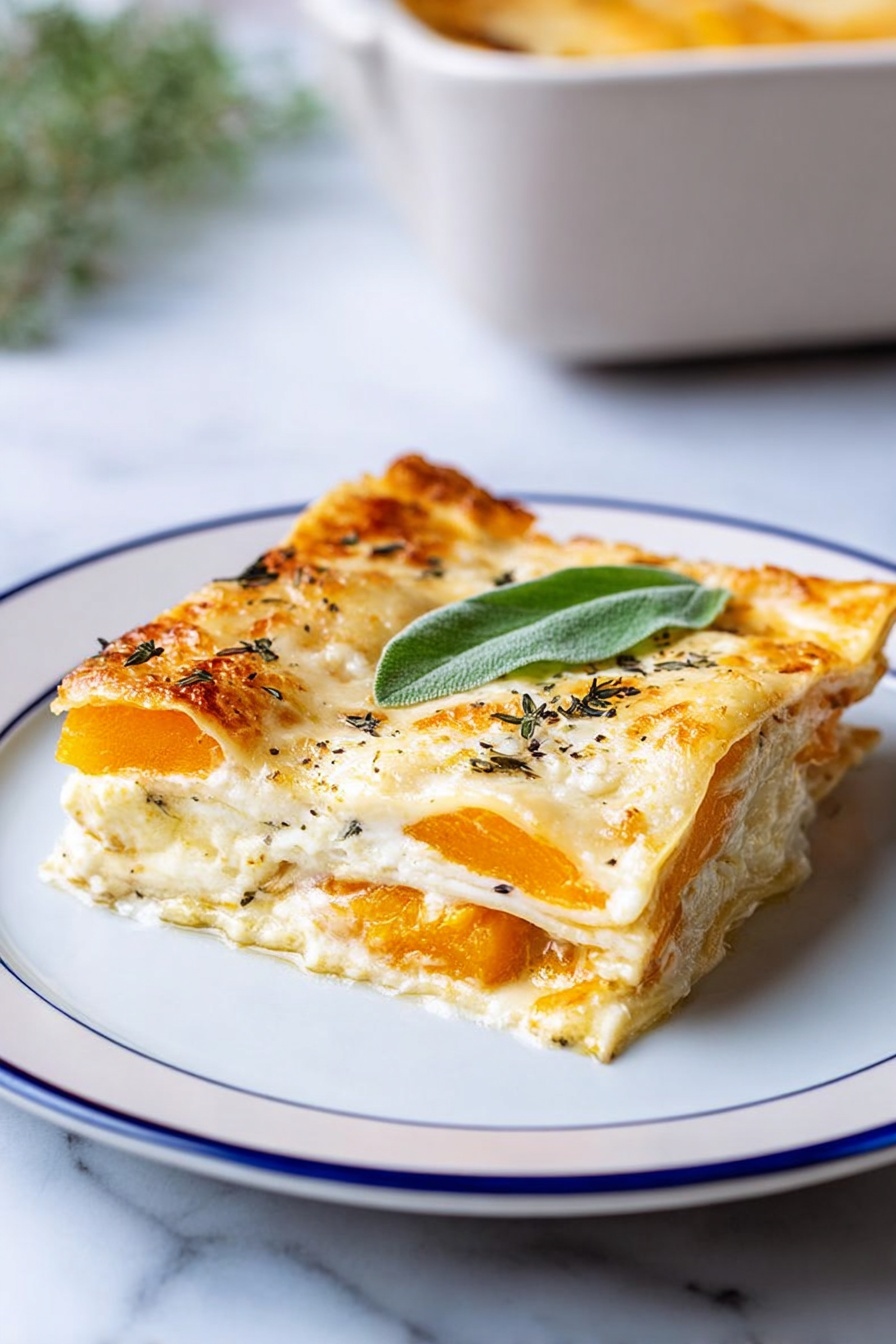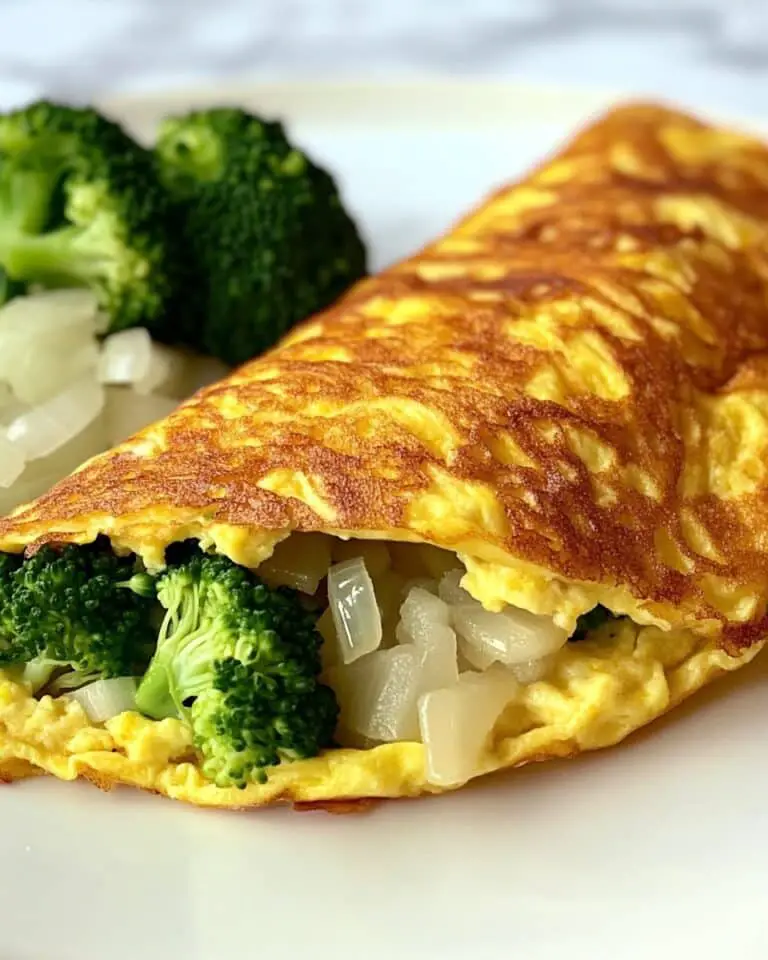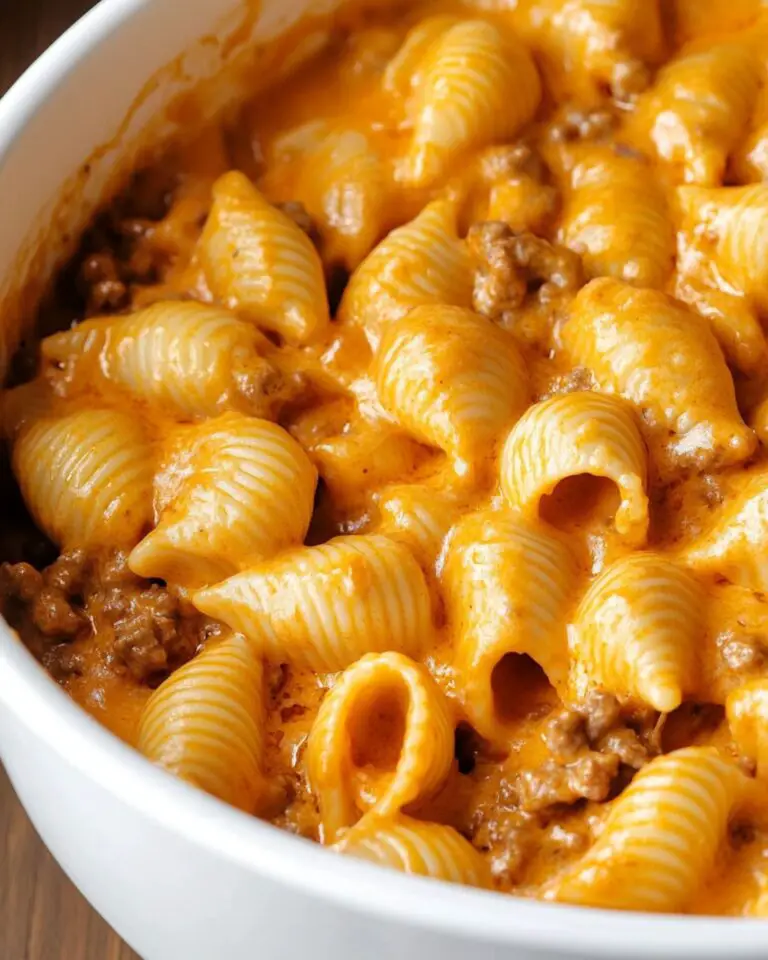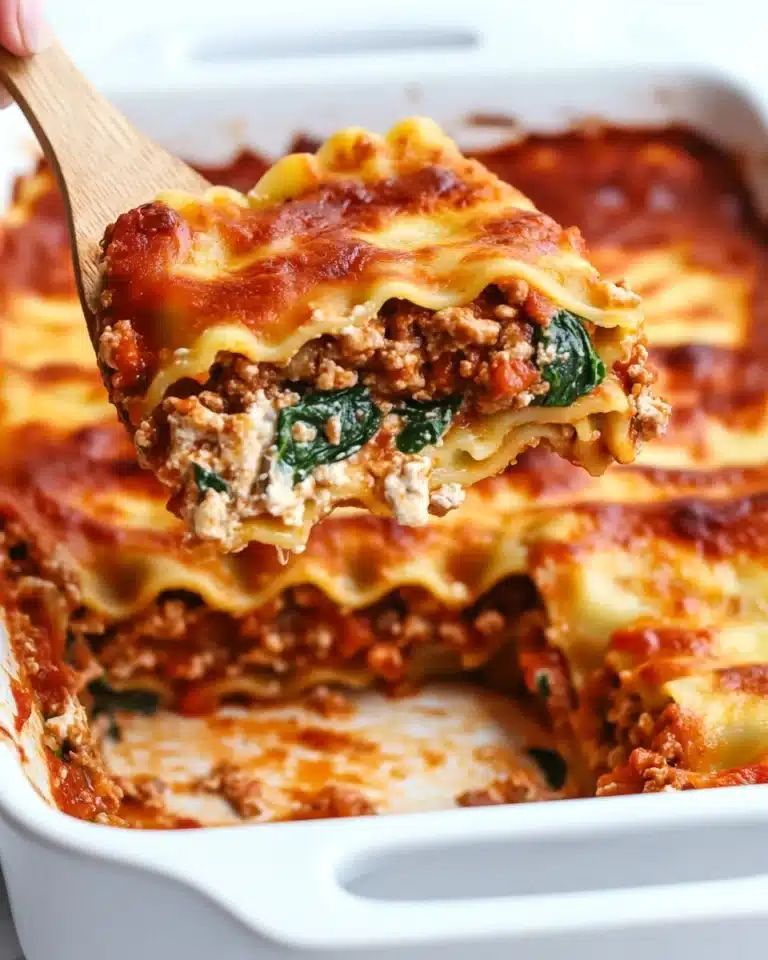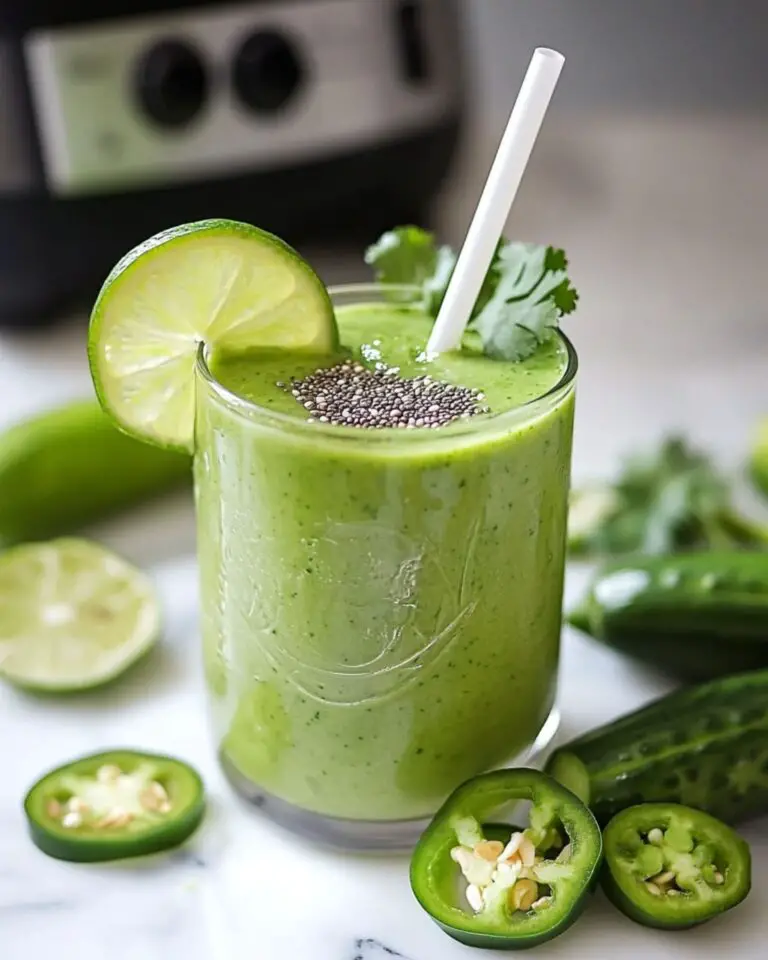If you’re looking for a twist on classic comfort food, you’re going to adore this Butternut Squash Lasagna with Sage Recipe. It’s not just your average lasagna— the sweet, velvety butternut squash paired with fragrant fresh sage creates a rich, cozy flavor that feels like a warm hug on a plate. I absolutely love how this turns out every time I make it, and trust me, your family and friends will be begging for the recipe too!
Why You’ll Love This Recipe
- Comforting and Unique: It has all the warm familiarity of lasagna, but with the sweet earthiness of butternut squash and fresh sage that you rarely find in traditional recipes.
- Perfectly Balanced Flavors: The lemon zest and nutmeg add subtle brightness and warmth, making each bite delightfully complex without being overwhelming.
- Easy to Customize: Whether you want gluten-free noodles or a dairy-free version, it’s flexible enough to adapt while still tasting amazing.
- A Crowd Pleaser: My family goes crazy for this, especially during cozy fall dinners or holiday gatherings—it’s always a hit!
Ingredients You’ll Need
These ingredients come together beautifully—fresh butternut squash for a natural creamy sweetness, aromatic sage for depth, and a blend of cheeses that melt into a luscious filling. A few simple pantry staples pull it all together.
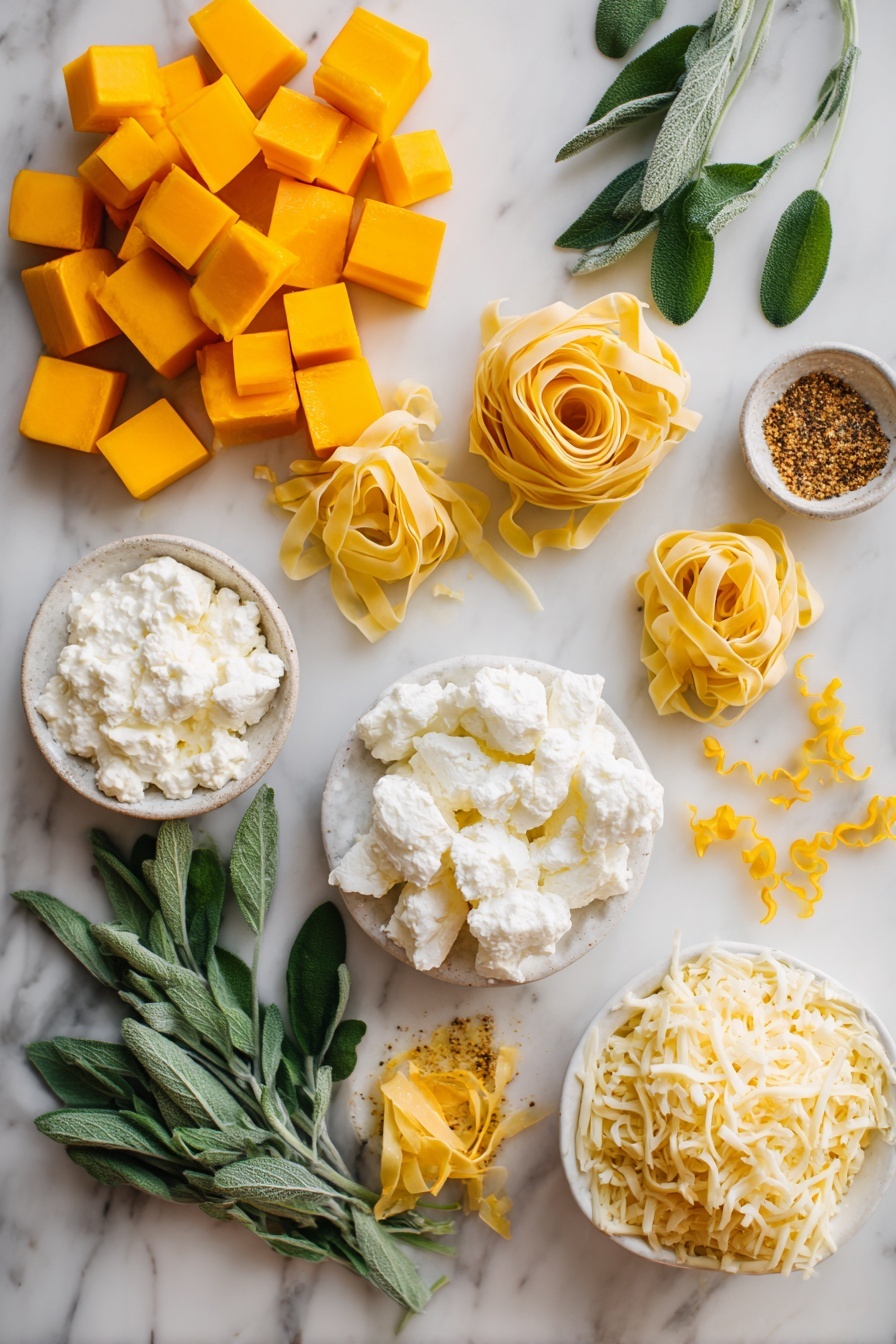
- Butternut squash: Choose a medium-sized squash (about 2 pounds) so it roasts evenly and provides a tender texture without being watery.
- Olive oil: Extra virgin is best to drizzle over the squash for roasting, enhancing flavor and preventing sticking.
- Kosher salt: For seasoning—this helps bring out the natural sweetness in the squash.
- Garlic powder: Just a touch adds a gentle savory depth without overpowering the delicate squash.
- Lasagna noodles: Either regular or gluten-free, boiled until just shy of al dente to avoid mushiness after baking.
- Fresh sage: Chopped for mixing into the ricotta sauce and sprinkled on top—it’s the star herb that lifts the whole dish.
- Lemon zest: Adds a vibrant, fresh pop that balances the richness of the cheeses beautifully.
- Ground nutmeg: A pinch warms up the ricotta sauce, complementing the sage and squash flavors subtly.
- Milk: Whole milk or your choice works to thin out the ricotta into a creamy sauce.
- Ricotta cheese: Whole milk ricotta is creamy and mild, making it the perfect base for the sauce.
- Fresh ground black pepper: Gives a little kick and complexity to the cheesy layers.
- Pecorino cheese: Sharp, salty, and nutty—balances the sweetness of the squash.
- Mozzarella cheese: Melty and gooey, it creates those irresistible cheese pulls everyone loves in lasagna.
Variations
I’m a big fan of making this dish your own, so feel free to tweak it! Depending on your mood or dietary needs, I’ve found simple swaps and add-ins that keep it delicious.
- Gluten-free version: I usually use gluten-free lasagna noodles without any change to the rest of the recipe. The texture comes out just as comforting.
- Vegan adaptation: Substitute ricotta with cashew cheese, use plant-based mozzarella, and swap milk for almond or oat milk. Fresh sage and roasted squash still shine.
- Added greens: Sometimes I sneak in sautéed spinach or kale between layers—it packs a nutritional punch without messing with the flavor balance.
- Spicy twist: A pinch of crushed red pepper flakes in the ricotta sauce adds a subtle heat that wakes up the palate nicely.
How to Make Butternut Squash Lasagna with Sage Recipe
Step 1: Prepare the Butternut Squash
Start by peeling and cutting your butternut squash into ½-inch cubes. I discovered this trick: a serrated vegetable peeler makes peeling so much easier and safer—trust me, I used to struggle with stubborn squash skin! Boil the cubes in salted water for about 5 to 6 minutes until they’re tender but not mushy. Drain them well, then toss with olive oil, salt, and garlic powder. This step softens the squash and infuses it with flavor, making a smooth and rich base for your lasagna.
Step 2: Cook the Noodles
While your squash is boiling, bring a large pot of well-salted water to a boil and cook your lasagna noodles just before they reach al dente—about 5 minutes. Stir frequently so they don’t stick together. Once done, drain the noodles immediately and lay them in a single layer on a baking sheet drizzled with olive oil, turning each noodle to coat it lightly. This simple step keeps them from sticking during assembly, which I learned the hard way the first time I skipped this and ended up with a sticky noodle mess!
Step 3: Mix the Ricotta Sauce
In a medium bowl, mix chopped fresh sage, lemon zest, nutmeg, salt, pepper, ricotta, and milk. I like to reserve a little bit of sage to sprinkle on top later for a pop of fresh color and flavor. Stir everything until smooth and creamy—this sauce is going to add luscious layers of flavor that balance sweet squash and melted cheese perfectly.
Step 4: Assemble the Lasagna
Grab a 9” x 13” baking dish and spread ½ cup of the ricotta sauce evenly across the bottom to prevent sticking. Then layer with noodles, half the cooked squash, about 2/3 cup of ricotta sauce, 1 cup shredded mozzarella, and ⅓ cup Pecorino cheese. Repeat the layers once more—noodles, squash, ricotta sauce, mozzarella, Pecorino. Finish with a final noodle layer, spread the remaining ricotta sauce on top, then sprinkle the top with mozzarella, Pecorino, and reserved sage. I like to cut noodles to fit edges neatly for a tidy presentation—makes the final dish look so professional!
Step 5: Bake and Serve
Cover the dish with foil and bake in a preheated 375°F oven for 40 minutes. Then, carefully remove the foil and bake for another 20 minutes until the top is golden brown and bubbly. Let it rest for 5 to 10 minutes before cutting—this helps the layers set up so your slices hold together beautifully. Trust me, the aroma that fills your kitchen at this step alone is worth the wait.
Pro Tips for Making Butternut Squash Lasagna with Sage Recipe
- Peel and Cut Wisely: Using a serrated vegetable peeler for butternut squash saved me loads of frustration and kept my fingers safe. Definitely invest in a good one!
- Prevent Sticky Noodles: Tossing cooked noodles with olive oil right after draining is a game changer for easy layering—no sticking, no tears.
- Balance Moisture: Don’t over-boil the squash; you want it tender but not soggy to keep your lasagna layers intact and not watery.
- Rest Before Serving: Let the baked lasagna chill a bit out of the oven so slices hold their shape—otherwise it can be a bit too gooey and runny.
How to Serve Butternut Squash Lasagna with Sage Recipe
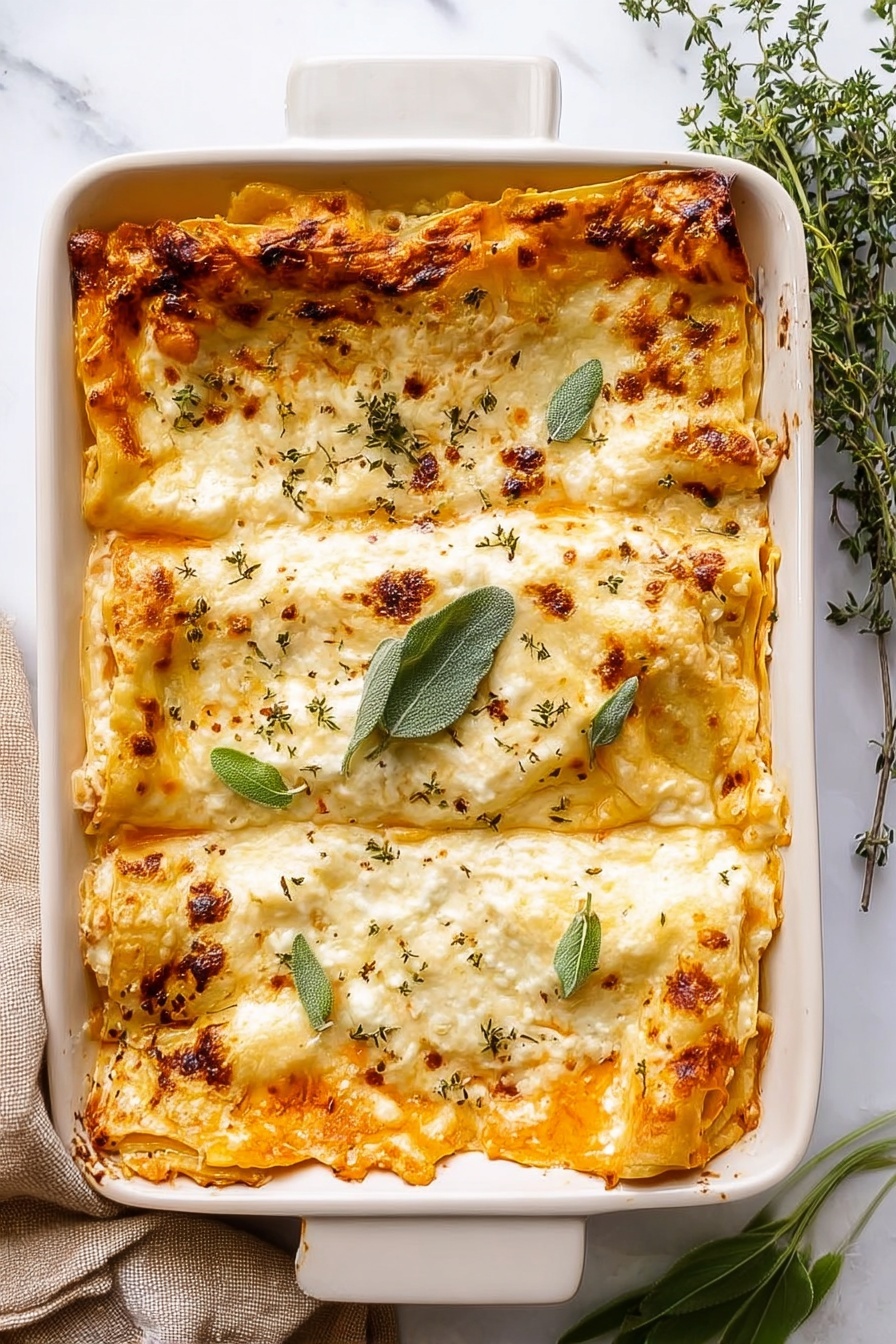
Garnishes
I love topping this lasagna with a few fresh sage leaves crisped in a bit of butter for added aroma and a stunning presentation. A light sprinkle of extra Pecorino cheese right before serving adds a nice salty contrast too.
Side Dishes
Pair this dish with a simple green salad dressed in lemon vinaigrette to brighten up the richness. Roasted Brussels sprouts or garlic sautéed green beans also complement the earthy flavors beautifully.
Creative Ways to Present
For special occasions, I’ve served individual portions in mini ramekins or cast-iron skillets to make each serving feel personal and impressive. Layering with thin slices of roasted pear or apple on top adds a surprising fruity twist that guests rave about!
Make Ahead and Storage
Storing Leftovers
I usually cover leftovers tightly with foil or plastic wrap and store in the fridge for up to 2-3 days. I find reheated slices taste just as comforting as the first time—perfect for a quick weekday dinner.
Freezing
If I have extra, I cut the lasagna into single servings and freeze them individually wrapped. This way, I can pull out just one portion at a time. It freezes really well without losing that lovely moist texture.
Reheating
To reheat, I thaw the piece overnight in the fridge, then cover with foil and bake it at 400°F for about 15 minutes until warmed through. This method keeps the top from drying out and restores the gooey cheese goodness.
FAQs
-
Can I use pre-roasted butternut squash instead of boiling it?
Absolutely! Roasting the butternut squash instead of boiling intensifies its natural sweetness and adds a bit of caramelized flavor. Just be sure to cut it into uniform cubes and roast at 400°F until fork tender, about 20-25 minutes, before using it in the lasagna.
-
Do I have to boil the lasagna noodles?
If you can find fresh lasagna noodles, they often don’t need boiling before baking—just be sure to separate them well and slightly overlap during assembly. For dried noodles, boiling just before al dente helps ensure they cook perfectly in the lasagna without drying out.
-
What if I don’t have fresh sage?
Fresh sage really brightens the dish, but if you can’t find it, dried sage can be used in smaller amounts (start with 1 teaspoon and adjust). You might also try substituting with fresh thyme for a different but complementary herb flavor.
-
Is this recipe good for meal prepping?
Yes! This lasagna stores and freezes really well, making it an excellent meal prep option. You can assemble it a day ahead, refrigerate, then bake it fresh or freeze individual portions for later use.
Final Thoughts
I still remember the first time I made Butternut Squash Lasagna with Sage Recipe—the blend of creamy cheese, sweet squash, and herbal sage totally won me over. It feels fancy but is really approachable to make, perfect for sharing with people you love or treating yourself on a cozy night. I hope you enjoy making and eating this as much as I do. Trust me, once you’ve tried it, it’ll become one of your go-to comfort meals, too!
Print
Butternut Squash Lasagna with Sage Recipe
- Prep Time: 30 minutes
- Cook Time: 1 hour
- Total Time: 1 hour 30 minutes
- Yield: 9 servings
- Category: Main Dish
- Method: Baking
- Cuisine: Italian
- Diet: Vegetarian
Description
Butternut Squash Lasagna with Sage is a comforting, flavorful vegetarian dish featuring tender butternut squash, aromatic fresh sage, and a rich ricotta cheese sauce layered between tender lasagna noodles and topped with melted mozzarella and Pecorino cheese. This recipe offers a delightful twist on traditional lasagna, highlighting seasonal squash and herbaceous notes for a hearty, satisfying meal perfect for family dinners or special occasions.
Ingredients
For the Butternut Squash
- 2-pound butternut squash (medium), peeled and cut into 1/2-inch cubes
- ½ tablespoon olive oil
- ½ teaspoon kosher salt
- ¼ teaspoon garlic powder
For the Lasagna
- 9 to 12 lasagna noodles (6 to 8 ounces, gluten-free if necessary)
- 1 ½ tablespoons chopped fresh sage, divided, plus additional leaves as desired for topping
- Zest of 1/2 lemon (about 2 teaspoons)
- ⅛ teaspoon ground nutmeg
- ½ cup plus 2 tablespoons milk
- 16 ounces (2 cups) whole milk ricotta cheese
- ¼ teaspoon kosher salt
- Fresh ground black pepper, to taste
- 1 cup shredded Pecorino cheese, divided
- 8 ounces (2 ½ cups) shredded mozzarella cheese, divided
Instructions
- Preheat the oven: Preheat your oven to 375 degrees Fahrenheit to prepare for baking the lasagna later.
- Boil the squash: Peel and cut the butternut squash into 1/2-inch cubes. Bring a medium pot of water to a boil, add the squash cubes, and cook for 5 to 6 minutes until fork tender. Drain well and transfer to a medium bowl. Toss the cooked squash with olive oil, kosher salt, and garlic powder to season.
- Boil the noodles: In a large pot of well-salted boiling water, cook the lasagna noodles just before al dente, about 5 minutes, stirring often. Drain the noodles and drizzle a baking sheet with olive oil. Lay the noodles flat on the sheet and turn them over to coat both sides with olive oil to prevent sticking.
- Prepare the ricotta sauce: In a medium bowl, mix 1 tablespoon chopped sage, lemon zest, ground nutmeg, ricotta cheese, kosher salt, freshly ground black pepper, and milk until combined and creamy. Reserve about ½ tablespoon sage for topping.
- Layer the lasagna: In a 9” x 13” baking dish, spread ½ cup of ricotta sauce evenly on the bottom. Add a layer of noodles, then half of the cooked butternut squash, followed by approximately 2/3 cup of ricotta sauce, 1 cup shredded mozzarella, and ⅓ cup Pecorino cheese. Repeat the layering with another layer of noodles, the remaining squash, ricotta sauce, mozzarella, and Pecorino cheese. For the final top layer, place noodles and spread the remaining ricotta sauce over them. Sprinkle the top evenly with the remaining ½ cup mozzarella, ⅓ cup Pecorino cheese, and the reserved ½ tablespoon chopped sage.
- Bake the lasagna: Cover the baking dish tightly with aluminum foil and bake for 40 minutes. Remove the foil carefully and bake for an additional 20 minutes until the top is nicely browned and bubbly. Let the lasagna stand for 5 to 10 minutes before slicing and serving. Refrigerate leftovers for 2 to 3 days and reheat in a 400°F oven if desired.
Notes
- If you are using fresh lasagna noodles, boiling is not necessary; you can layer them directly.
- For make-ahead preparation, boil the butternut squash and noodles in advance, refrigerate separately coated with olive oil, or assemble the entire lasagna beforehand and refrigerate overnight. Increase bake time to ensure it’s heated through when baking from chilled.
- Store leftovers covered in the refrigerator for up to 2 days or freeze individual servings for longer storage. To reheat, defrost in the refrigerator and warm covered in a 400°F oven for about 15 minutes.
Nutrition
- Serving Size: 1 slice (approx. 1/9 of recipe)
- Calories: 350
- Sugar: 4g
- Sodium: 450mg
- Fat: 16g
- Saturated Fat: 8g
- Unsaturated Fat: 7g
- Trans Fat: 0g
- Carbohydrates: 38g
- Fiber: 4g
- Protein: 15g
- Cholesterol: 40mg

